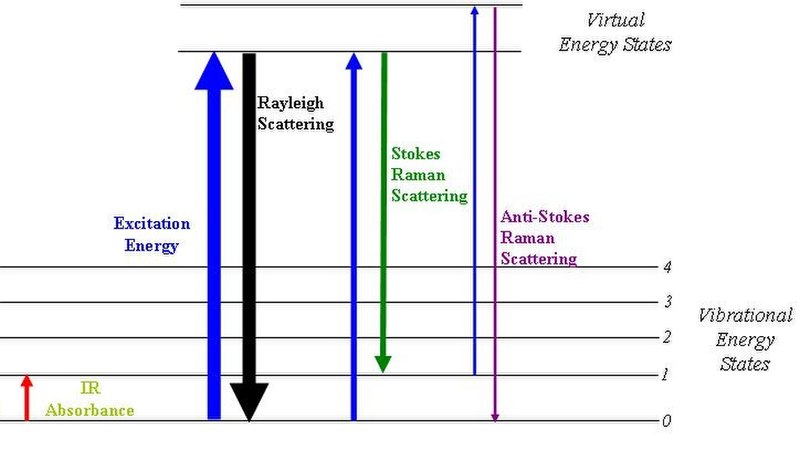|
SSir Chandrasekhara Venkata Raman,
a class="mw-redirect" title="Fellow of the Royal Society" href="http://en.wikipedia.org/wiki/Fellow_of_the_Royal_Society">
FRS (7 November 1888 – 21 November 1970) was an
Indian physicist
whose work was influential in the growth of science in the world. He was the
recipient of the
Nobel Prize for Physics in 1930 for the discovery that when light traverses
a transparent material, some of the light that is deflected changes in
wavelength. This phenomenon is now called
Raman scattering and
is the result of the
Raman effect.
[edit]
EaEarly years
Venkata Raman was born at
Thiruvanaikaval, near
Tiruchirappalli,
Madras Presidency
to R. Chandrasekhara Iyer (b. 1866) and Parvati Ammal (Saptarshi Parvati).[1]
He was the second of their eight children. At an early age, Raman moved to the
city of
Vizag, Andhra Pradesh.
Studied in St.Aloysius Anglo-Indian High School. His father was a lecturer in
Mathematics and physics, so he grew up in an academic atmosphere.
Raman entered
title="Presidency College, Chennai" href="http://en.wikipedia.org/wiki/Presidency_College,_Chennai">
Presidency College, Chennai/a>
in 1902. In 1904, he gained his
B.Sc., winning the first place and the gold medal in physics. In 1907, he
gained his
M.Sc., obtaining the highest distinctions. He joined the Indian Finance
Department as an Assistant Accountant General.
[edit]
CCareer
InIn 1917, Raman resigned from his government service and took up the newly
created Palit Professorship in
Physicsa> at the
University of Calcutta. At the same time, he continued doing research at the
Indian Association for the Cultivation of Science, Calcutta, where he became
the Honorary Secretary. Raman used to refer to this period as the golden era of
his career. Many talented students gathered around him at the IACS and the
University of Calcutta.

Energy level diagram showing the states involved in Raman signal.
On February 28, 1928, through his experiments on the
scattering of light, he
discovered the
Raman effect. It was instantly clear that this discovery was an important
one. It gave further proof of the
quantum nature of light.
Raman spectroscopy
came to be based on this phenomenon, and
Ernest Rutherford
referred to it in his presidential address to the
Royal Society in 1929.
Raman was president of the 16th session of the
Indian Science Congress in 1929. He was conferred a
knighthood, and
medals and honorary doctorates by various universities. Raman was confident of
winning the Nobel
Prize in Physics as well, and was disappointed when the Nobel Prize went to
Richardson in 1928 and to
de Broglie in 1929. He was so confident of winning the prize in 1930 that he
booked tickets in July, even though the awards were to be announced in November,
and would scan each day's newspaper for announcement of the prize, tossing it
away if it did not carry the news. He did eventually win the 1930
Nobel Prize in
Physics "for his work on the scattering of light and for the discovery of
the
effect n named after him. He was the first Asian and first non-White to
receive any Nobel Prize in the sciences. Before him
Rabindranath Tagore
(also Indian) had received the Nobel Prize for Literature.
C.V Raman & Bhagavantam, discovered the quantum photon spin in 1932, which
further confirmed the quantum nature of light.
[1]/a>
Raman also worked on the
acoustics of musical instruments. He worked out the theory of
transverse vibration of bowed strings, on the basis of
superposition velocities. He was also the first to investigate the harmonic
nature of the sound of the Indian drums such as the
tabla and the
mridangam.
Raman and his student Nagendranath, provided the correct theoretical
explanation for the acousto-optic effect (light scattering by sound waves), in a
series of articles resulting in the celebrated Raman-Nath theory. Modulators,
and switching systems based on this effect have enabled optical communication
components based on lasera>
systems.
In 1934, Raman became the director of the
a href="http://en.wikipedia.org/wiki/Indian_Institute_of_Science">Indian
Institute of Science in
Bangalore, where two years later he continued as a professor of physics.
Other investigations carried out by Raman were experimental and theoretical
studies on the diffraction of light by acoustic waves of
ultrasonic
and hypersonic frequencies (published 1934-1942), and those on the effects
produced by X-rays on infrared vibrations in crystals exposed to ordinary light.

RainbowStampsClub
He also started a company called Travancore Chemical and Manufacturing Co.
Ltd. in 1943 along with Dr. Krishnamurthy. The Company during its 60 year
history, established four factories in Southern India. In 1947, he was appointed
as the first National Professor by the new government of Independent India.
In 1948, Raman, through studying the spectroscopic behavior of crystals,
approached in a new manner fundamental problems of crystal dynamics. He dealt
with the structure and properties of
diamond, the structure and
optical behavior of numerous
iridescent s substances (labradorite,
pearly feldspara>,
agate/a>,
opal, and
pearls). Among
his other interests were the optics of
colloids,
electrical and magnetic
anisotropy, and the physiology of human vision.
[edit]
Personal life
Raman retired from the
Indian
Institute of Science in 1948 and established the
Raman Research
Institute in Bangalore,
Karnataka a year later. He
served as its director and remained active there until his death in 1970, in
Bangalore, at the age of 82.
HeHe was married on 6 May 1907 to Lokasundari Ammal with whom he had two sons,
Chandrasekhar and
Radhakrishnan.
Honours and awards
Raman was honoured with a large number of honorary doctorates and memberships
of scientific societies. He was elected a
a class="mw-redirect" title="Fellow of the Royal Society" href="http://en.wikipedia.org/wiki/Fellow_of_the_Royal_Society">
Fellow of the Royal Society early in his career (1924) and
knighted in 1929. In 1930 he won the
Nobel Prize in
Physics. In 1941 he was awarded the
Franklin Medal.. In 1954 he was awarded the
Bharat Ratna.[span>2span>]
He was also awarded the
Lenin Peace Prize in 1957.
India celebrates
National Science Day on 28 February of every year to commemorate the
discovery of the Raman effect in 1928.
|

